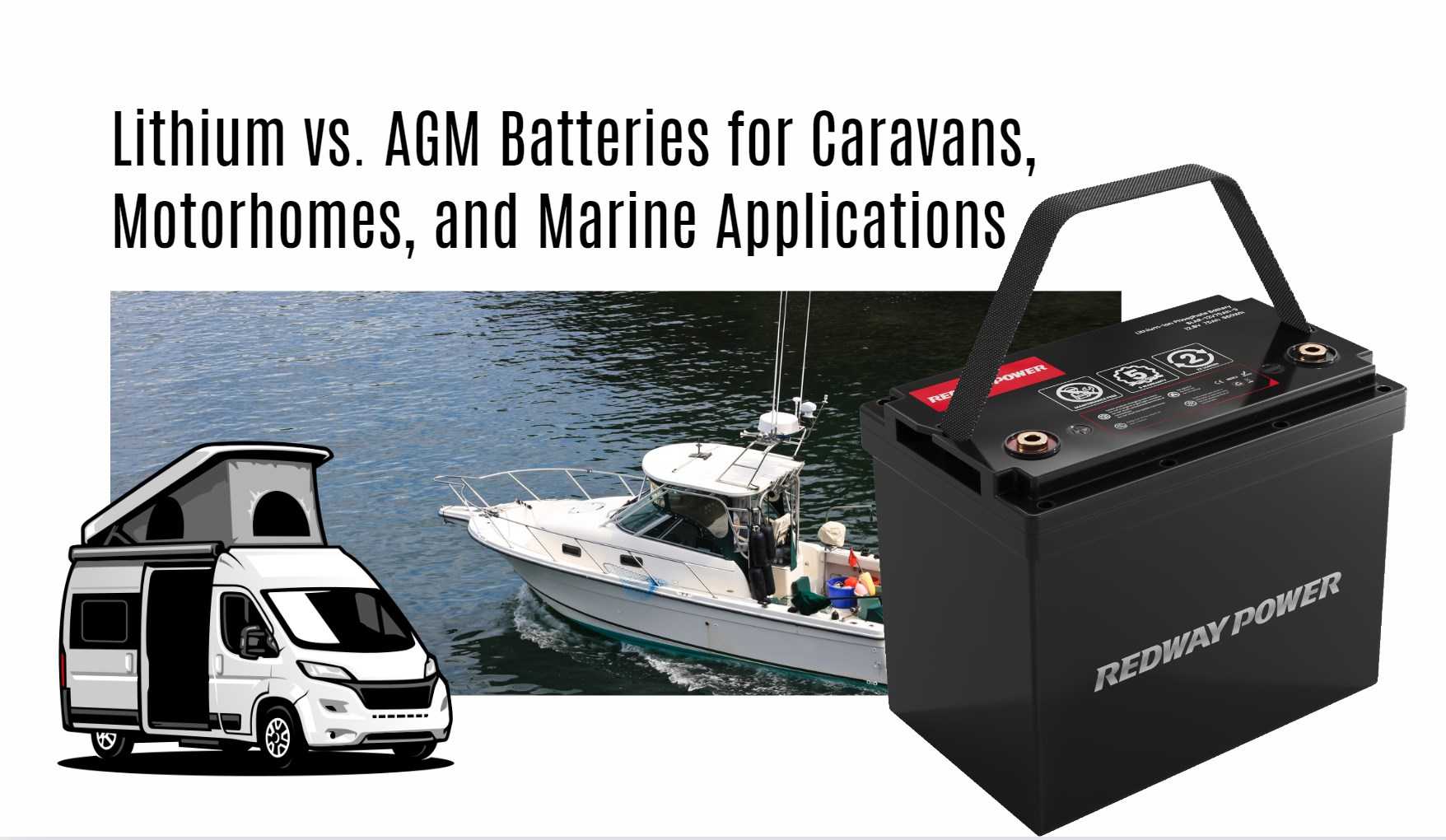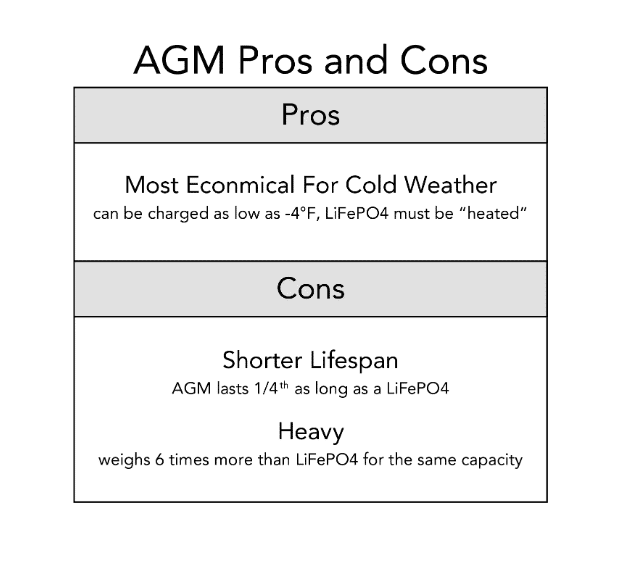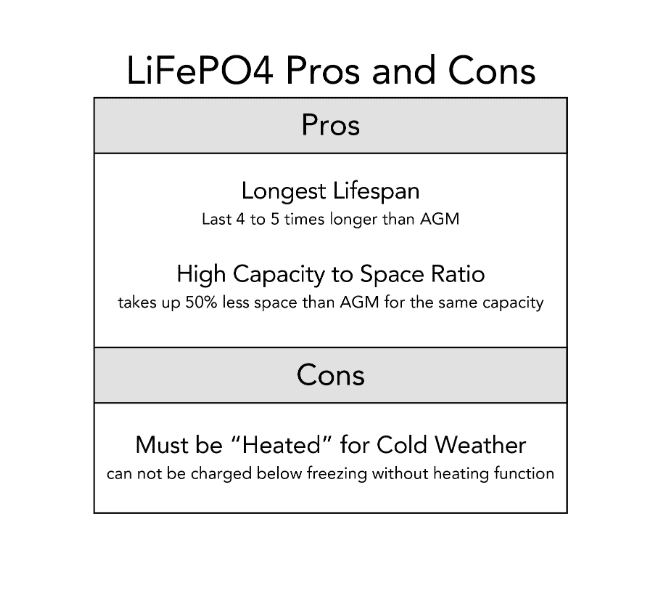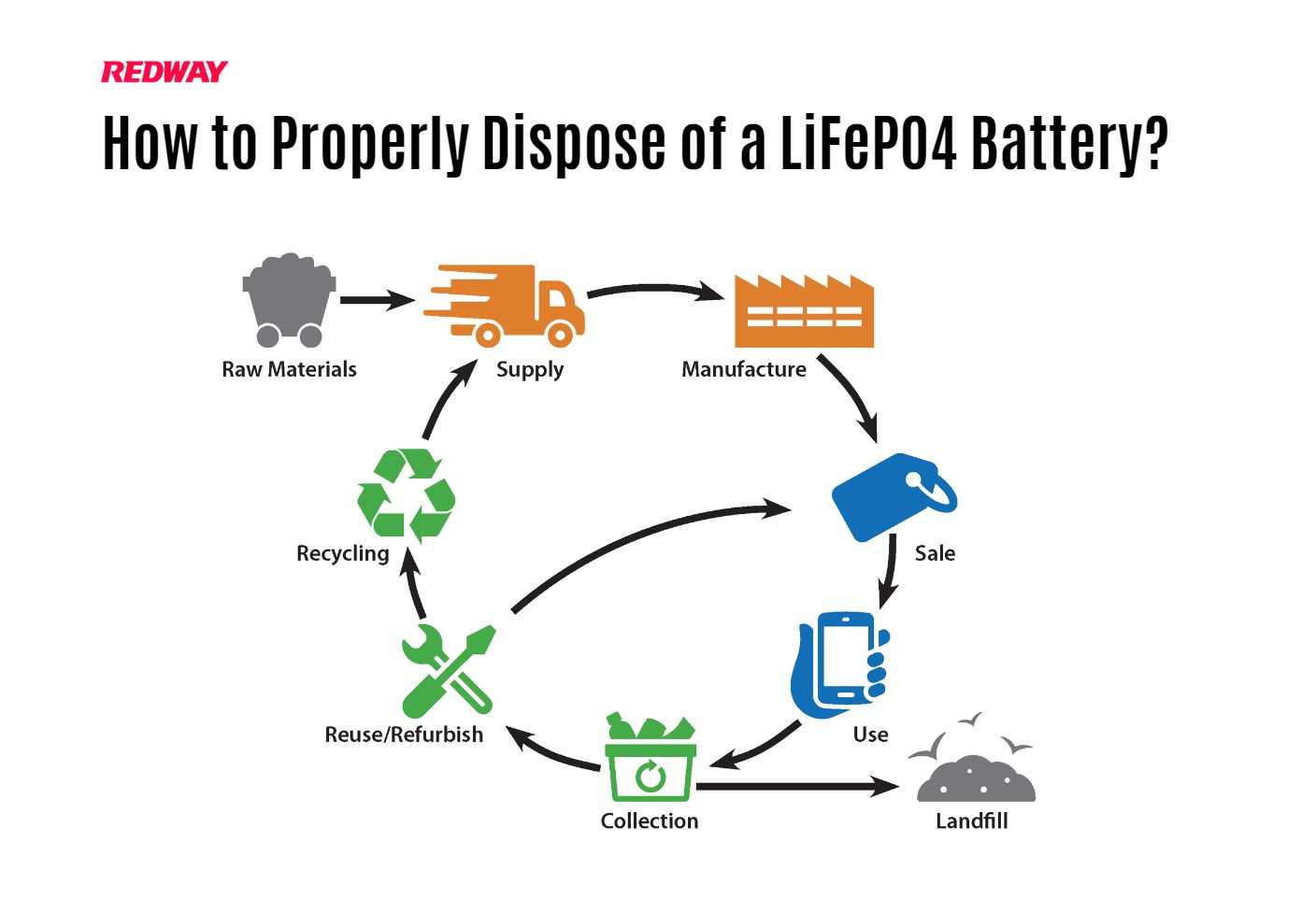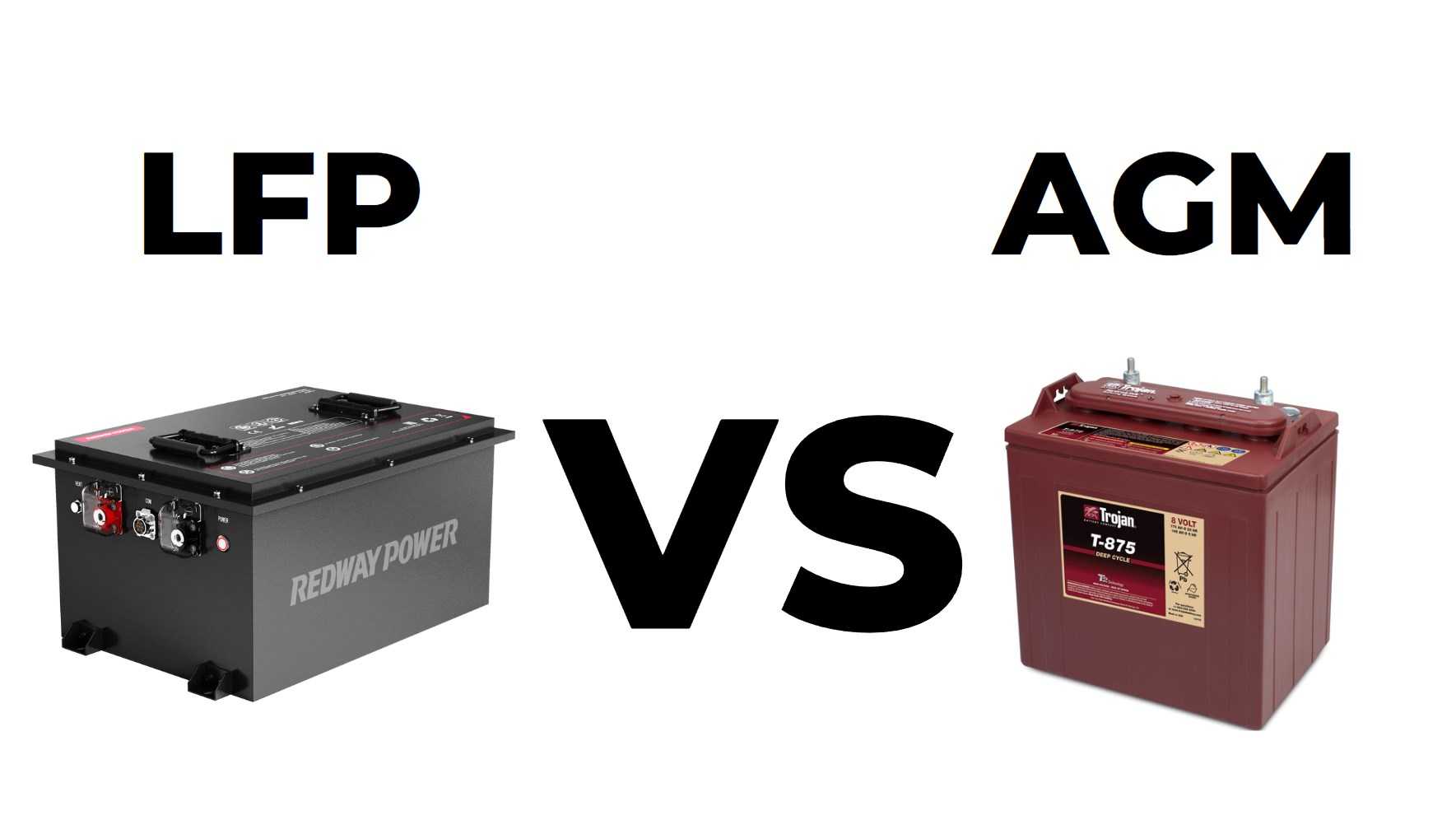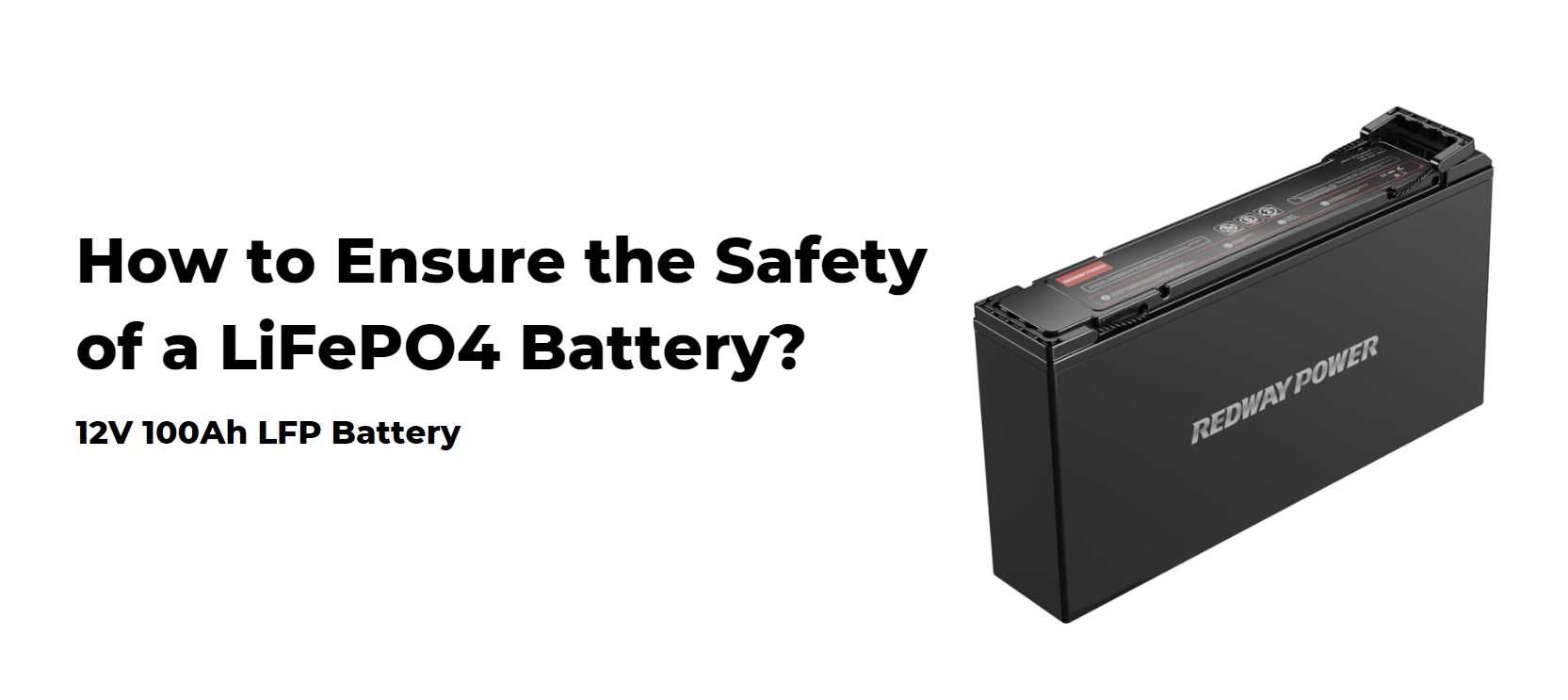Selecting the optimal battery for your caravan, motorhome, or marine vessel is a critical decision that can significantly impact performance and efficiency. In this comprehensive analysis, we compare AGM (Absorbent Glass Mat) and Lithium Iron Phosphate (LiFePO4) batteries, focusing on energy efficiency, lifespan, charging capabilities, and overall value.
Understanding AGM and Lithium Iron Phosphate (LiFePO4) Batteries
AGM Batteries
AGM batteries, developed in the 1970s, are a type of lead-acid battery known for their spill-proof design and maintenance-free operation. These batteries employ a fiberglass mat to absorb the electrolyte, which makes them a robust choice for deep cycle and backup power needs in caravans, motorhomes, and marine settings.
Key Features of AGM Batteries:
- Spill-Proof and Maintenance-Free: The design eliminates the risk of spills and reduces maintenance.
- Low Self-Discharge Rate: Ensures batteries retain charge over extended periods.
- Temperature Tolerance: Can operate across a broad temperature range, although performance diminishes significantly above 30°C.
- Cycle Life: Typically 200-300 cycles, heavily influenced by usage conditions and Depth of Discharge (DoD).
Despite their reliability and lower initial cost, AGM batteries have a limited cycle life and are sensitive to temperature extremes and deep discharges.
Lithium Iron Phosphate (LiFePO4) Batteries
LiFePO4 batteries represent a modern advancement in lithium-ion technology, utilizing iron phosphate as the cathode material. These batteries offer superior energy density, longevity, and charging speed compared to AGM batteries.
Key Features of LiFePO4 Batteries:
- High Energy Density: More power stored in a compact space.
- Long Cycle Life: Capable of up to 5,000 cycles, vastly outlasting AGM batteries.
- Fast Charging: Significantly reduced charging times.
- Lightweight and Compact: Ideal for space-constrained applications.
- High Discharge Rate: Provides consistent power over extended periods.
- Safety: Lower risk of thermal runaway, enhancing safety in high-demand environments.
One potential drawback is their sensitivity to low temperatures, which can be mitigated by LiFePO4 batteries with integrated warming systems.
Comparison Between AGM and LiFePO4 Batteries
Longevity and Cycle Life
- AGM Batteries: Typically last for 200-300 cycles. Frequent deep discharges and high temperatures can further reduce lifespan.
- LiFePO4 Batteries: Offer up to 5,000 cycles or more, significantly reducing the frequency of replacements and overall cost over time.
Energy Efficiency and Depth of Discharge (DoD)
- AGM Batteries: Operate efficiently up to a DoD of 50%, beyond which performance and lifespan diminish.
- LiFePO4 Batteries: Maintain high efficiency up to an 80% DoD, allowing for greater usable energy per cycle.
Weight and Space Considerations
- AGM Batteries: Heavier and bulkier, which can be a limitation in space-constrained applications.
- LiFePO4 Batteries: Lighter and more compact, providing a significant advantage in caravans, motorhomes, and marine vessels where space and weight are critical.
Charging Capabilities
- AGM Batteries: Require longer charging times and specific charging profiles to avoid damage.
- LiFePO4 Batteries: Charge faster and more efficiently, though they require specialized chargers designed for lithium batteries.
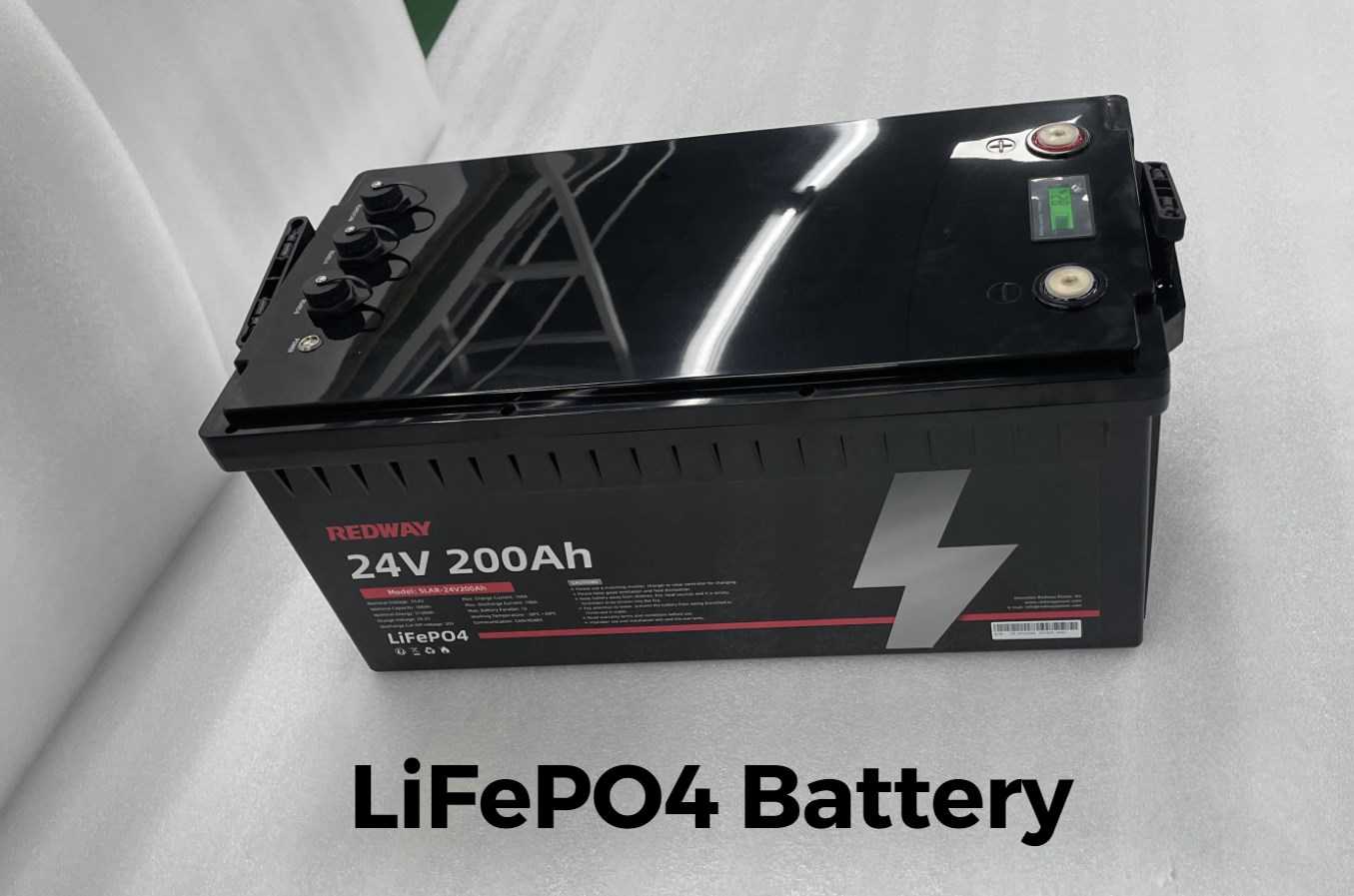
Cost and Value
- AGM Batteries: Lower initial cost but higher long-term expenses due to frequent replacements and maintenance.
- LiFePO4 Batteries: Higher upfront cost but more economical in the long run due to extended lifespan and reduced maintenance needs.
Applications in Caravans, Motorhomes, and Marine Environments
Caravans and Motorhomes
LiFePO4 batteries offer substantial advantages in caravans and motorhomes, where weight reduction and space efficiency are paramount. The higher energy density and discharge rate support extended off-grid camping, providing reliable power for lighting, appliances, and electronics.
Case Study: Replacing AGM batteries with LiFePO4 in a caravan can result in a weight reduction of up to 60%, enhancing fuel efficiency and payload capacity.
Marine Applications
In marine environments, the safety and reliability of LiFePO4 batteries are crucial. These batteries deliver consistent power for essential systems such as navigation, communication, and lighting, even in harsh conditions.
Example: LiFePO4 batteries can significantly improve performance in marine vessels, ensuring long-lasting power and reducing the need for frequent battery replacements.
LiFePO4 vs AGM, Which type of battery is right for you?
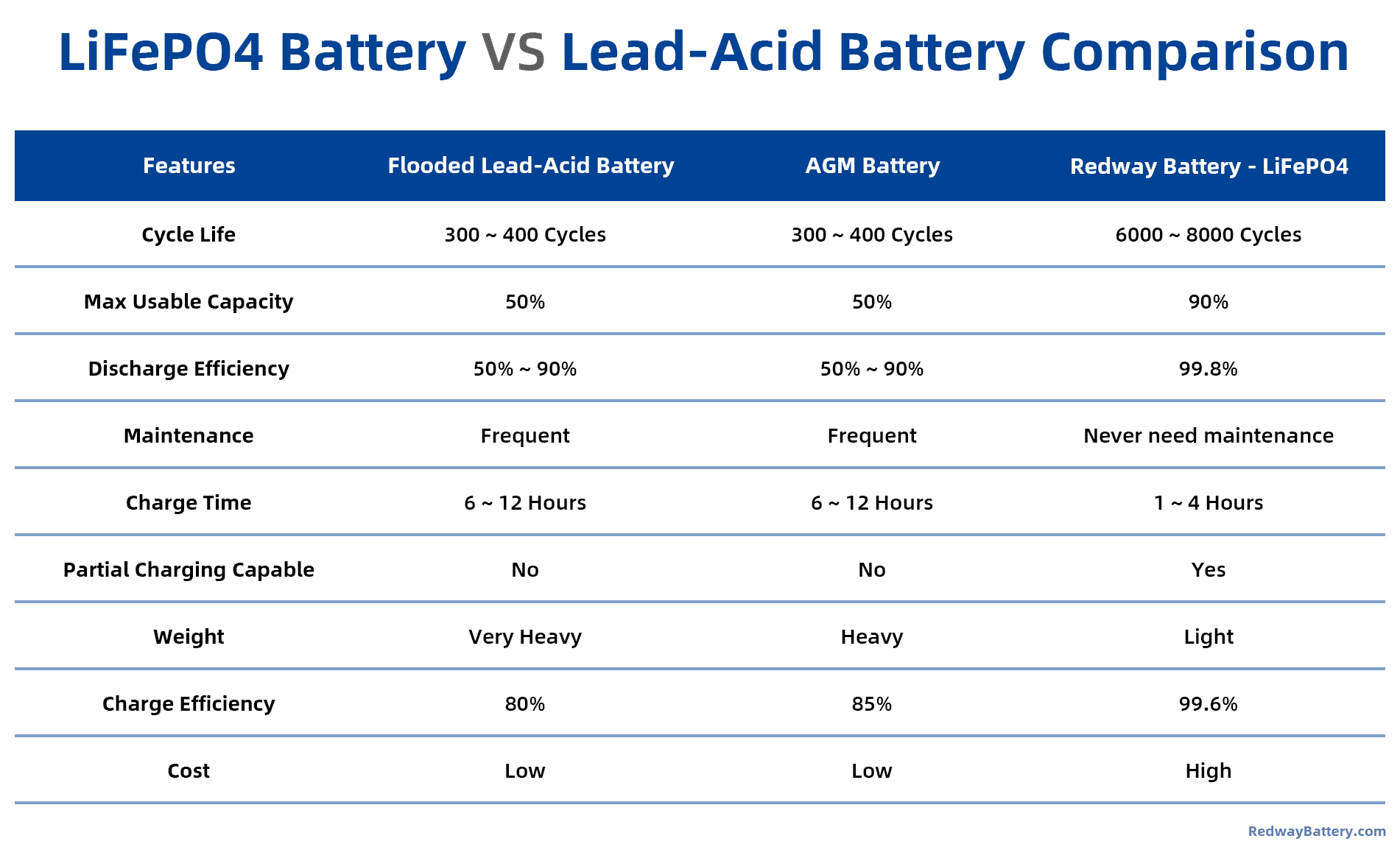
When deciding between an AGM battery and a LiFePO4 battery, there are important factors to think about. One key factor is how you intend to use the battery.
If you need a dependable and budget-friendly choice to start and power small devices like boats or RVs, an AGM battery is a good fit. They require minimal upkeep, can handle tough conditions, and last for a considerable time.
However, if you need something with greater power capacity that can run larger devices like electric cars or solar panels then LiFePO4 batteries may be more suitable. Although they might cost more than AGMs upfront but their longevity makes up for its high price tag in the long run.
Also, think about the environment when choosing between these batteries. If you care about being eco-friendly and supporting sustainability, lithium phosphate-based batteries are a great choice. They are recyclable, which helps reduce electronic waste going to landfills.
In the end, the choice between AGM and LiFePO4 batteries comes down to your needs, including budget, preferences, and expectations from each technology.
Conclusion
In conclusion, LiFePO4 batteries present a superior choice over AGM batteries for caravans, motorhomes, and marine applications due to their extended cycle life, higher energy efficiency, faster charging capabilities, and reduced weight. Despite a higher initial investment, LiFePO4 batteries offer substantial long-term savings and performance benefits, making them the optimal solution for modern power needs in mobile and marine environments.
Choosing the right battery is crucial for maximizing the efficiency and reliability of your vehicle or vessel. By opting for a high-quality LiFePO4 battery from reputable brands such as Victron Energy, Pylontech, or Discover Batteries, you can ensure durable and dependable power for all your adventures.
FAQs
What is an AGM Battery?
An AGM battery, or Absorbent Glass Mat battery, is a sealed lead-acid battery that utilizes fiberglass mats to hold the electrolyte solution. This construction makes AGM batteries more durable, resistant to vibration, and maintenance-free. With a higher voltage output, faster recharge rates, and longer lifespan, AGM batteries are ideal for vehicles with high electrical demands, marine applications, and renewable energy systems. Enjoy the benefits of a spill-proof and reliable power solution with AGM batteries.
How do I Dispose of a LiFePO4 Battery?
- Recycling for Environmental Protection:
- Recycling LiFePO4 batteries at certified facilities minimizes environmental impact.
- Valuable materials like lithium, iron, and phosphate can be recovered and reused.
- Avoid improper disposal methods like throwing batteries in regular garbage or burning them.
- Storage and Transportation:
- Store LiFePO4 batteries in a cool, dry place to ensure safety.
- Fully discharge the battery before disposal to prevent potential hazards.
- Transport the battery safely to a recycling facility, following guidelines and regulations.
How can I Ensure Safety of a LiFePO4 Battery?
- Charger Selection:
- Use a quality charger specifically designed for LiFePO4 batteries.
- Avoid overcharging by following recommended charging guidelines.
- Regular Inspections and Maintenance:
- Regularly inspect your LiFePO4 battery for physical damage or signs of wear.
- Store the battery in a cool, dry place to maintain its integrity.
- High-Quality Batteries:
- Choose LiFePO4 batteries from reputable manufacturers and suppliers.
- High-quality batteries are less likely to develop leaks and ensure reliable performance.
Can LiFePO4 Batteries be Charged with Standard Chargers?
LiFePO4 batteries have specific voltage and current requirements that may not be met by standard chargers designed for other battery chemistries. Using a normal charger for LiFePO4 batteries can result in inefficient charging, reduced battery capacity, and potential damage. It is recommended to use LiFePO4 battery chargers specifically designed for this battery chemistry to ensure safe and efficient charging.
Can I Use LiFePO4 Battery in Place of AGM?
- LiFePO4 Batteries:
- Higher energy density and longer lifespan compared to AGM batteries.
- Superior safety features, including resistance to overheating and reduced risk of explosions.
- Lightweight and compact design, suitable for applications where weight and size are important factors.
- AGM Batteries:
- Reliable and durable, known for their long lifespan and high current output.
- Suitable for backup power systems and off-grid setups.
- Operational in a broad temperature range without compromising performance.
- Understand the differences in charging characteristics and voltage requirements between LiFePO4 and AGM batteries.
- Mixing different battery types may lead to imbalances in energy contribution and potential damage.
- Seek professional advice and adhere to specific guidelines when using different battery types together.
What is an AGM Battery and Its Key Characteristics?
An AGM battery, short for absorbent glass mat battery, is a type of sealed lead-acid battery widely used in various industries. It is esteemed for its high reserve capacity, extended lifespan, and exceptional performance. AGM batteries have a unique design with an ultra-thin glass mat that absorbs and retains the battery acid, ensuring a dry electrolyte state. This design provides several advantages, including enhanced starting performance, lightweight and durable construction, low internal resistance, swift recharge, deeper discharge capacity, vibration and shock resistance, and spill-proof and maintenance-free operation. AGM batteries are the go-to choice for reliable and long-lasting power solutions.
How to Properly Dispose of a LiFePO4 Battery?
Disposing of a LiFePO4 battery responsibly is essential for environmental protection and safety. Recycling LiFePO4 batteries is the recommended method, as it offers numerous benefits. By recycling these batteries, we conserve non-renewable resources, lower manufacturing costs, reduce landfill waste, prevent environmental pollution, and avoid potential fire hazards. Recycling centers specialize in handling LiFePO4 batteries and ensure the safe extraction of valuable materials. Contact local authorities or recycling centers to find the nearest facilities for proper LiFePO4 battery disposal. Together, let’s contribute to a greener future by recycling LiFePO4 batteries.
- Recycle for resource conservation: LiFePO4 batteries contain valuable materials that can be extracted and reused through recycling, contributing to the conservation of non-renewable resources.
- Reduce manufacturing costs: Recycling LiFePO4 batteries reduces the need for manufacturing new batteries from scratch, leading to cost savings in the production process.
- Minimize landfill waste: By recycling LiFePO4 batteries, we can prevent these batteries from ending up in landfills, reducing environmental pollution and the accumulation of hazardous materials.
- Prevent potential hazards: Proper disposal of LiFePO4 batteries through recycling helps avoid fire hazards and environmental harm caused by the improper handling of these batteries.
Can LiFePO4 Batteries Replace AGM Batteries in Applications?
- Longer cycle life: LiFePO4 batteries have a significantly longer cycle life compared to AGM batteries, lasting for thousands of charge cycles with minimal capacity loss.
- Faster charging efficiency: LiFePO4 batteries can be charged at a faster rate, allowing for quicker power access and reduced charging time.
- Higher depth of discharge: LiFePO4 batteries can be discharged to a higher depth without compromising battery performance, providing more usable capacity.
- Lighter weight: LiFePO4 batteries are much lighter than AGM batteries, making them ideal for applications that require portable power solutions.
- Better safety features: LiFePO4 batteries are known for their superior safety features, with a lower risk of thermal runaway or explosion compared to AGM batteries.
- More environmentally friendly: LiFePO4 batteries have a more eco-friendly composition and a longer lifespan, resulting in reduced waste and environmental impact.
- Cost considerations: While LiFePO4 batteries may have a higher upfront cost, their longer lifespan and superior performance make them a more cost-effective option in the long run.
How Do Lifepo4 and AGM Batteries Compare in Safety?
- LiFePO4 Battery Safety:
- Inherent stability and resistance to overheating
- Reduced risk of thermal runaway and explosions
- Proper handling and maintenance practices for safe operation
- AGM Battery Safety:
- Lead-acid composition with safety mechanisms to prevent acid spills
- Cost-effectiveness and suitability for high surge current applications
- Proper handling and maintenance practices to ensure safety
- Importance of Proper Handling and Maintenance:
- Adherence to safety guidelines for both LiFePO4 and AGM batteries
- Regular inspections for leakage, corrosion, and physical damage
- Suitable charging methods and storage conditions to prevent accidents
- Terminal cleaning and maintenance to ensure proper connection and performance
How Do Lifepo4 and AGM Batteries Compare in Charging Efficiency?
- LiFePO4 Batteries: Faster Charging Efficiency
- LiFePO4 batteries have a faster charging rate, enabling quick power access and reduced charging time.
- Their advanced technology and chemical composition contribute to their superior charging efficiency.
- AGM Batteries: Slower Charging Efficiency
- AGM batteries may have a slower charging efficiency compared to LiFePO4 batteries.
- They may take longer to reach full charge, requiring more time for power replenishment.
- Choosing the Right Battery for Efficient Charging
- When applications require fast and efficient charging, LiFePO4 batteries are a preferred choice.
- Their superior charging performance ensures reliable and timely power availability.
What is a LiFePO4 Battery and Its Advantages?
- High Charging and Discharging Efficiency:
- LiFePO4 batteries have a high charging and discharging efficiency, ensuring improved energy utilization and longer operational periods between charges.
- Lightweight and Compact Design:
- LiFePO4 batteries are lightweight and compact, making them ideal for portable applications. Their small size provides more flexibility in design and installation.
- Environmental Friendliness:
- LiFePO4 batteries are environmentally friendly as they do not contain toxic heavy metals and are fully recyclable. They offer a greener energy storage solution with reduced environmental impact.
- Stable Chemistry for Enhanced Safety:
- LiFePO4 batteries have stable chemistry, minimizing the risk of explosions or fires. They provide a safe and reliable power solution, ensuring user safety.
- Wide Temperature Range:
- LiFePO4 batteries can operate efficiently in a wide temperature range, making them suitable for various environments and applications.
- Long Cycle Life:
- LiFePO4 batteries have a long cycle life, lasting for thousands of charge and discharge cycles. This longevity makes them a cost-effective and sustainable power solution.
- Suitable for Solar Power Systems:
- LiFePO4 batteries are compatible with solar power systems, making them an excellent choice for renewable energy storage. They can store energy generated from solar panels efficiently and reliably.
How to Ensure the Safety of a LiFePO4 Battery?
- Safety Features of LiFePO4 Batteries:
- LiFePO4 batteries exhibit thermal stability and reduced risk of thermal runaway.
- Their stable chemistry minimizes the chances of overheating or combustion.
- Built-in safety mechanisms and battery management systems (BMS) enhance safety during operation.
- Proper Charging Practices:
- Use chargers specifically designed for LiFePO4 batteries to ensure proper handling.
- Adhere to recommended voltage and current limits to prevent stress on battery cells.
- Regularly check battery voltage levels during charging to prevent overcharging.
- Maintenance and Storage Techniques:
- Regularly inspect battery terminals for physical damage or corrosion.
- Ensure connections are clean and secure for optimal performance.
- Store LiFePO4 batteries in cool, dry conditions to prevent degradation.
- Maintain an optimal charge level during storage to preserve battery integrity.
- Disposal and Recycling:
- Follow proper recycling protocols for the safe disposal of LiFePO4 batteries.
- Do not dispose of batteries in regular trash bins.
- Many retailers and recycling centers accept old batteries for safe disposal.
Are Standard Chargers Suitable for LiFePO4 Batteries?
- Risks of Using a Standard Charger:
- Overcharging: Standard chargers may apply a higher voltage than is safe for LiFePO4 batteries, leading to overcharging and damaging the battery cells.
- Damage to Battery Cells: The charging algorithm used in standard chargers may not be compatible with LiFePO4 chemistry, causing internal stress and damage to the battery cells.
- Reduced Battery Performance: Overcharging and cell damage can significantly diminish the battery’s capacity and performance, shortening its overall lifespan.
- Safety Hazards:
- Fire and Explosion: Overcharging can cause the battery to overheat, leading to the release of flammable gases and potentially resulting in a fire or explosion.
- Cell Venting: Excessive pressure buildup within the battery cells due to overcharging can cause them to vent, releasing toxic gases and electrolytes that can be harmful to humans and the environment.
- Thermal Runaway: In severe cases, overcharging can trigger a chain reaction known as thermal runaway, where the battery rapidly generates heat, potentially leading to an uncontrolled fire or explosion.
Related Posts
- Zapping the Voltage: A Simple Guide to Multimeter Testing for AAA Battery Voltage
- Will Voltage Affect Battery Performance?
- Will solid-state batteries replace lithium?
- Will Batteries Last Longer in the Freezer? Answers to Your Freezing Battery Myths!
- Will batteries last longer in the freezer?
- Will a 42V Charger Work on a 48V Battery? Understanding the Risks and Best Practices

